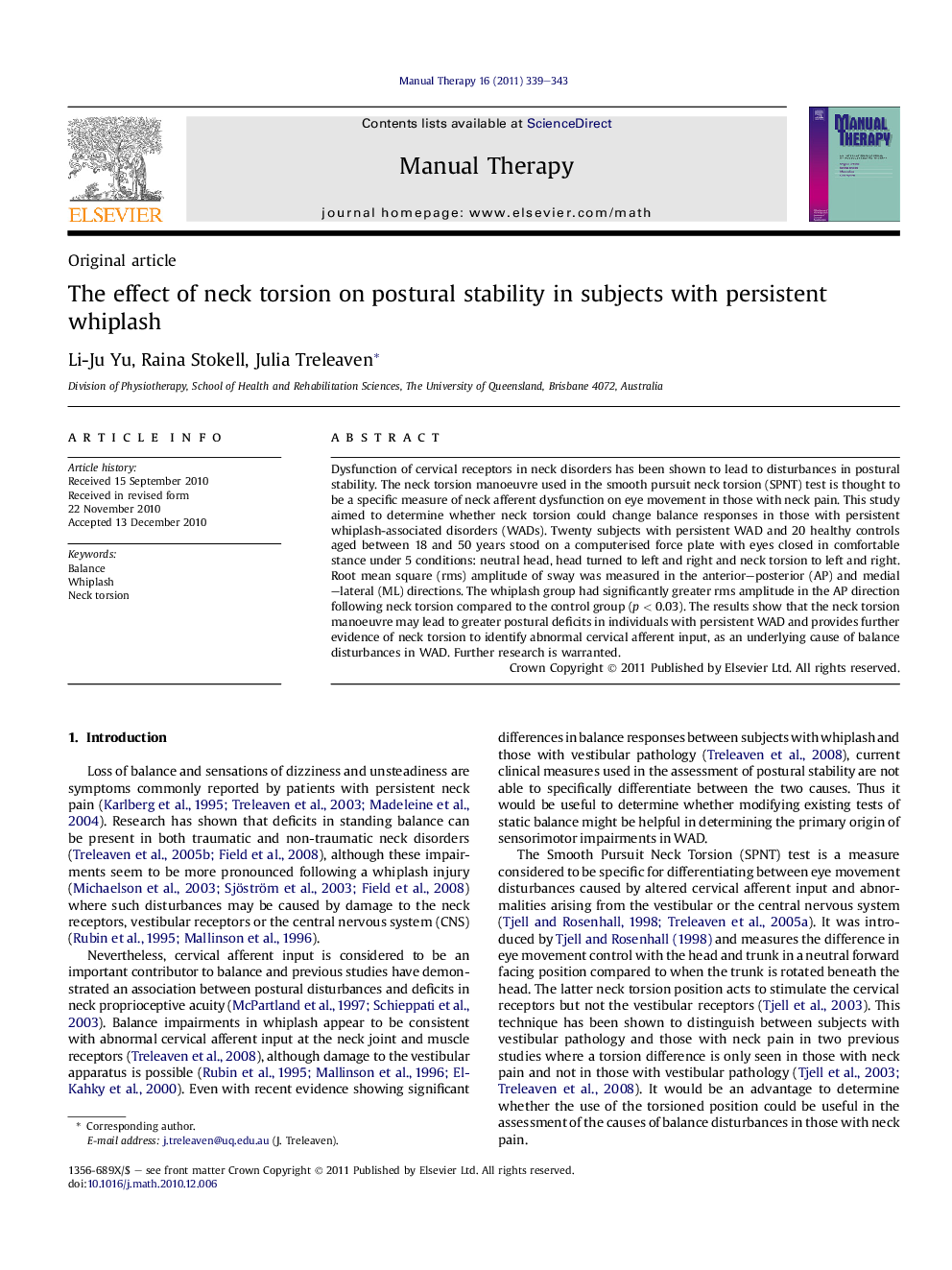| Article ID | Journal | Published Year | Pages | File Type |
|---|---|---|---|---|
| 2625388 | Manual Therapy | 2011 | 5 Pages |
Dysfunction of cervical receptors in neck disorders has been shown to lead to disturbances in postural stability. The neck torsion manoeuvre used in the smooth pursuit neck torsion (SPNT) test is thought to be a specific measure of neck afferent dysfunction on eye movement in those with neck pain. This study aimed to determine whether neck torsion could change balance responses in those with persistent whiplash-associated disorders (WADs). Twenty subjects with persistent WAD and 20 healthy controls aged between 18 and 50 years stood on a computerised force plate with eyes closed in comfortable stance under 5 conditions: neutral head, head turned to left and right and neck torsion to left and right. Root mean square (rms) amplitude of sway was measured in the anterior–posterior (AP) and medial–lateral (ML) directions. The whiplash group had significantly greater rms amplitude in the AP direction following neck torsion compared to the control group (p < 0.03). The results show that the neck torsion manoeuvre may lead to greater postural deficits in individuals with persistent WAD and provides further evidence of neck torsion to identify abnormal cervical afferent input, as an underlying cause of balance disturbances in WAD. Further research is warranted.
